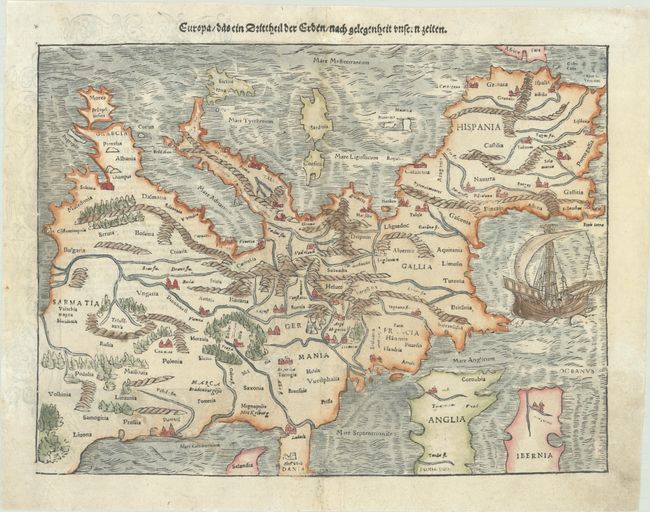Subject: Europe
Period: 1574 (published)
Publication: Cosmographey oder Beschreibung aller Länder
Color: Hand Color
Size:
13.5 x 10.2 inches
34.3 x 25.9 cm
Sebastian Munster (1489 - 1552) was one of the three most renowned cartographers of the sixteenth century, along with Mercator and Ortelius. Munster's Geographia and Cosmographia Universalis were two of the most widely read and influential books of the period. His editions of Ptolemy's Geographia, published between 1540 and 1552, were illustrated with 48 woodcut maps, the standard 27 Ptolemaic maps supplemented by 21 new maps. These new maps included a separate map of each of the known continents and marked the development of regional cartography in Central Europe. The antique geography was a prelude to Munster's major work, the Cosmographia, which was published in nearly 30 editions in six languages between 1544 and 1578 and then was revised and reissued by Sebastian Petri from 1588 to 1628. The Cosmographia was a geographical as well as historical and ethnographic description of the world. It contained the maps from the Geographia plus additional regional maps and city views with nearly 500 illustrations which made it one of the most popular pictorial encyclopedias of the sixteen century.
This is one of the earliest obtainable maps of the European continent. Its unusual orientation, with north at the bottom of the sheet and the Mediterranean Sea at top, also makes it one of the most interesting maps of Europe. Mountains, forests, rivers and towns fill the land and in the Atlantic Ocean there is a large sailing ship. Sebastian Munster was the first to make individual maps of each continent, and this map is from that series. The map was issued in both Munster's Geographia and Cosmographia. German text on verso with an elaborate woodblock panel.
References: Potter, p.98.
Condition: B+
A nice impression on a bright sheet with minor soiling in the image and professional repairs to small chips and tears in the blank margins, including a centerfold separation that just enters the image at bottom.


